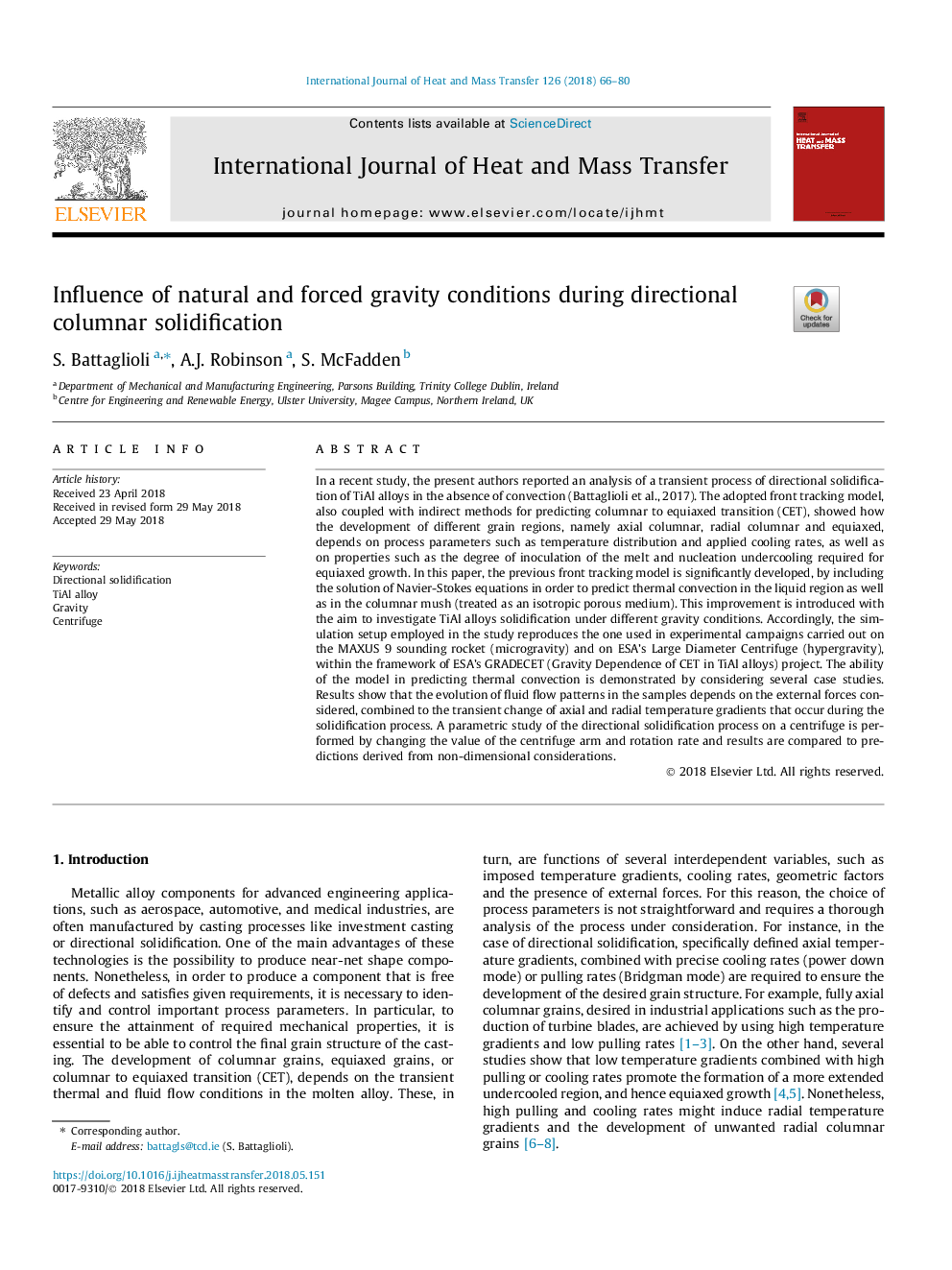| کد مقاله | کد نشریه | سال انتشار | مقاله انگلیسی | نسخه تمام متن |
|---|---|---|---|---|
| 7053855 | 1458013 | 2018 | 15 صفحه PDF | دانلود رایگان |
عنوان انگلیسی مقاله ISI
Influence of natural and forced gravity conditions during directional columnar solidification
ترجمه فارسی عنوان
تأثیر شرایط گرانشی طبیعی و اجباری در طی انجماد ستون سمت راست
دانلود مقاله + سفارش ترجمه
دانلود مقاله ISI انگلیسی
رایگان برای ایرانیان
کلمات کلیدی
موضوعات مرتبط
مهندسی و علوم پایه
مهندسی شیمی
جریان سیال و فرایندهای انتقال
چکیده انگلیسی
In a recent study, the present authors reported an analysis of a transient process of directional solidification of TiAl alloys in the absence of convection (Battaglioli et al., 2017). The adopted front tracking model, also coupled with indirect methods for predicting columnar to equiaxed transition (CET), showed how the development of different grain regions, namely axial columnar, radial columnar and equiaxed, depends on process parameters such as temperature distribution and applied cooling rates, as well as on properties such as the degree of inoculation of the melt and nucleation undercooling required for equiaxed growth. In this paper, the previous front tracking model is significantly developed, by including the solution of Navier-Stokes equations in order to predict thermal convection in the liquid region as well as in the columnar mush (treated as an isotropic porous medium). This improvement is introduced with the aim to investigate TiAl alloys solidification under different gravity conditions. Accordingly, the simulation setup employed in the study reproduces the one used in experimental campaigns carried out on the MAXUS 9 sounding rocket (microgravity) and on ESA's Large Diameter Centrifuge (hypergravity), within the framework of ESA's GRADECET (Gravity Dependence of CET in TiAl alloys) project. The ability of the model in predicting thermal convection is demonstrated by considering several case studies. Results show that the evolution of fluid flow patterns in the samples depends on the external forces considered, combined to the transient change of axial and radial temperature gradients that occur during the solidification process. A parametric study of the directional solidification process on a centrifuge is performed by changing the value of the centrifuge arm and rotation rate and results are compared to predictions derived from non-dimensional considerations.
ناشر
Database: Elsevier - ScienceDirect (ساینس دایرکت)
Journal: International Journal of Heat and Mass Transfer - Volume 126, Part B, November 2018, Pages 66-80
Journal: International Journal of Heat and Mass Transfer - Volume 126, Part B, November 2018, Pages 66-80
نویسندگان
S. Battaglioli, A.J. Robinson, S. McFadden,
